Tag: Bodybuilding
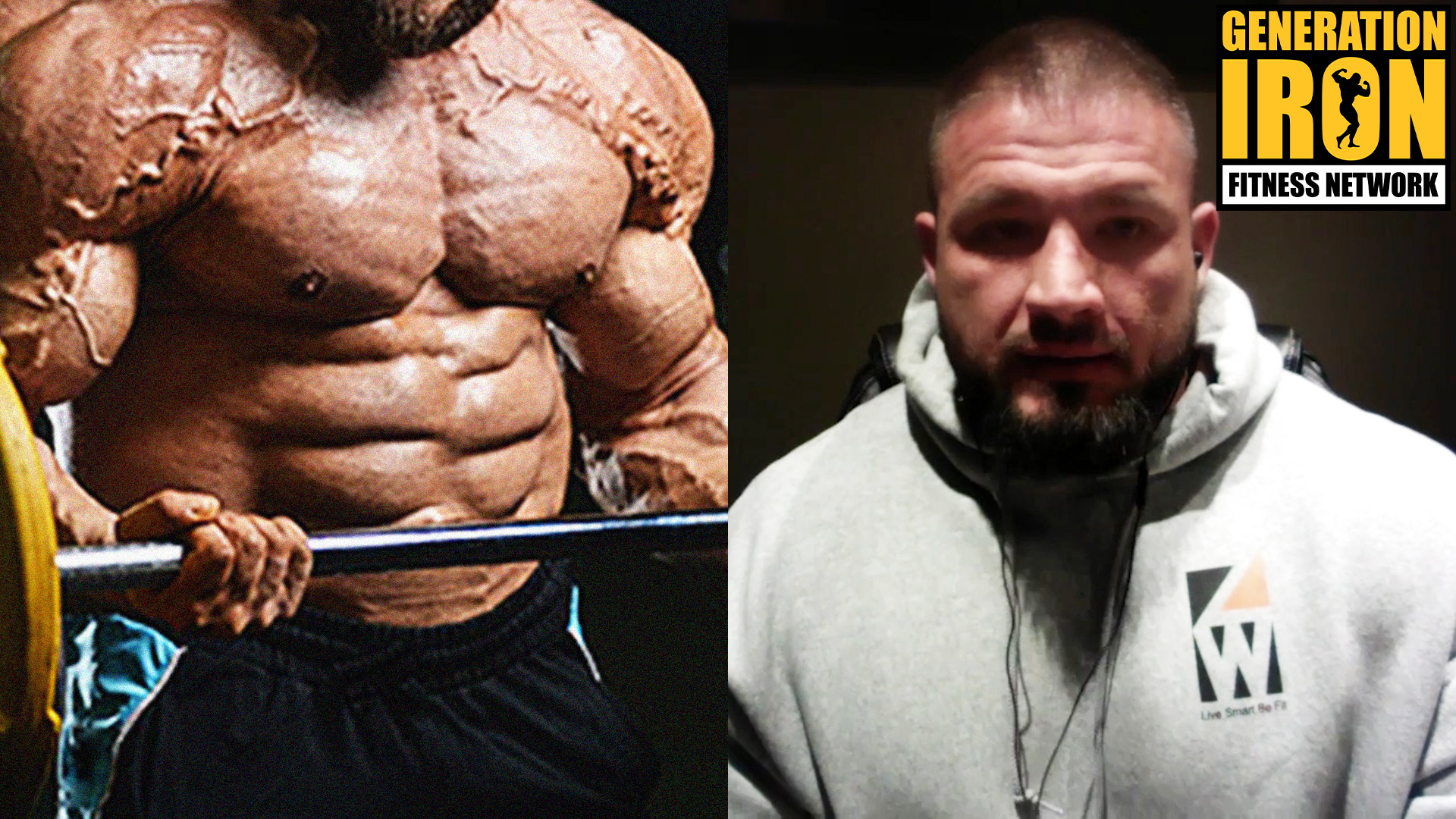
Zane Watson: How To Properly Train To Failure In Bodybuilding
[embedded content]
Zane Watson answers: Is training to failure necessary for bodybuilding success?
In bodybuilding, training to failure is a tactic that requires a lifter to lift reps until they can no longer put up weight. Rather than hit a specific number of reps, the reps continue until the body part can’t physically perform no matter how hard you try. But how necessary is this tactic to succeed as a pro bodybuilder? In our latest GI Exclusive, Zane Watson discusses the misconceptions about training to failure and how to perform the tactic properly.
When discussing bodybuilding tips and workout guides, aspiring bodybuilders always want to know the trick to optimize training. How many sets? How many reps per set? Should you do high weight and low volume or lower weight with higher volume. There are arguments on all sides of these different questions. Ultimately, this is all window dressing. What is most important is that you exhaust your muscle and hit all the right areas of the muscle for full growth.
This is easier said than done and the reason so many different strategies exist. They are an effort to get the lifter to full exhaust their muscles, hit all the right spots, and commit to full range of motion. For Zane Watson, his training tactics were inspired by Dorian Yates and then later by Ben Pakulski. This made him favor training until failure during his training sessions.
But is training to failure necessary? In Zane Watson’s humble opinion, he believes it is a key part towards bodybuilding success. There are arguments that feeling sore after a workout isn’t required for building muscle. Watson respectfully disagrees. He thinks that for full growth in a way that bodybuilders are seeking – feeling sore is key to knowing you push your muscles deep.
Training to failure guarantees a workout that will make you feel sore afterwards. It’s a tactic he favors. Of course, there is a difference between physically training to failure and mentally training to failure. Some bodybuilders, especially those new to training, mentally block themselves of how far they actually push while their muscles are under pressure. This is the same reason why blindly following a certain set/rep structure can fail.
Part of the skill behind being a successful bodybuilder is knowing your body’s true limits. Knowing when you are truly exhausting your muscle vs just mentally unable to handle the stress and pain of moving past that wall. For Zane Watson, training to true failure rather than focusing on reps is a helpful way to push to the next level. It’s his biggest tip for bodybuilders to push past plateaus.
You can watch Zane Watson talk in more detail about training to failure, his bodybuilding inspirations, more in our latest GI Exclusive interview above!
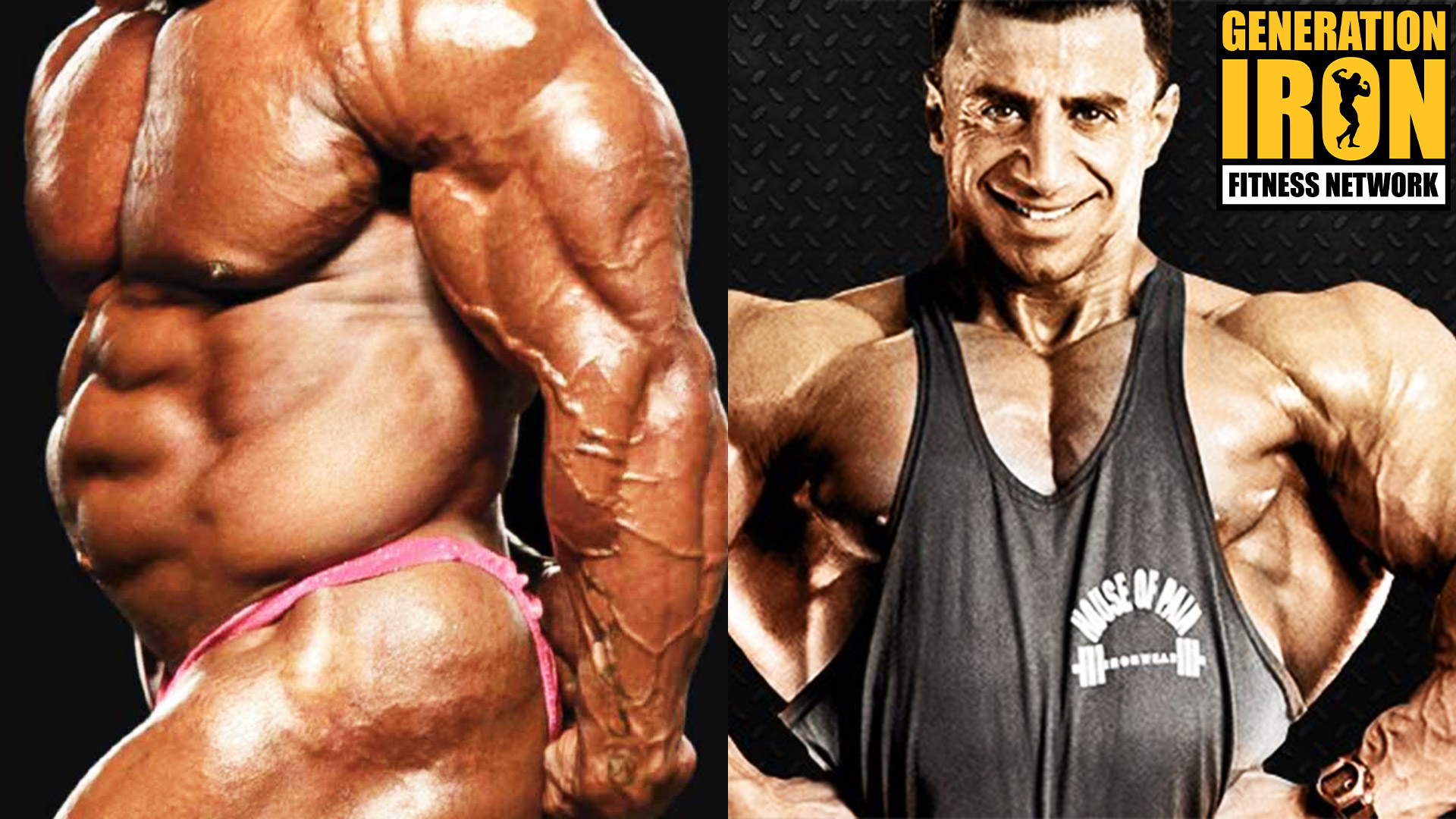
George Farah: The Biggest Mistake Bodybuilders Make When Cutting Weight
[embedded content]
George Farah explains the true key to cutting weight without diminishing muscle.
George Farah is one of the most legendary bodybuilding coaches in the history of the sport. So when he can share some vital advice to the masses on bodybuilding nutrition and dieting – it’s important to pay attention. In an era where being a mass monster is becoming increasingly more about heavier weight, it’s important to know how to get shredded properly. It’s a struggle, for example, that Big Ramy had for many years before finally earning his Mr. Olympia victory. In our latest GI Exclusive, George Farah details the biggest mistake to avoid when cutting weight in bodybuilding.
The notion of spot reducing fat has been debunked many times by many people. So the unfortunately truth is, if you have impressive muscle but flabby weak areas – there’s no way to spot check the fat without sacrificing the muscle. So how do bodybuilders cut down weight after a bulking cycle without diminishing their hard earned muscle?
We turned to legendary bodybuilding coach George Farah for his advice on this specific topic. His answer is direct, insightful, and something that all bodybuilders should heed when looking long term into their training and dieting plans. There is no trick to only burning fat without burning muscle. Instead, it’s important to prepare for the inevitability that you’ll need to cut down some weight and size overall.
George Farah claims that the biggest mistake bodybuilders make is not staying in shape during the off season. While bulking and cutting is a typical cycle for competitive bodybuilders – the bulking phase should not get too out of control. Farah holds nothing back when explaining this during our interview:
“Whatever you’re doing, you’re still going to lose muscle when you diet down. Especially if you gain a lot of fat. That’s why I tell people, listen, don’t call yourself a bodybuilder if you don’t have your abs in the off season.”
George Farah goes on to say how he “never understands” how bodybuilders are so shocked when they start cutting and end up losing much more weight than expected. This is because they put on more fat than they think – and unfortunately – muscle is always lost as well during this process.
That’s why a dirty bulk is often frowned upon by serious competitive bodybuilders. Dirty bulk is when you eat any kind of unhealthy food simply to build weight while you are pumping up muscle in the gym. A clean bulk relies on healthier foods so that you have less fat during the bulking phase.
Still, even with a clean bulk, how do you prevent losing too much muscle and underperforming on size and shape before a competition? George Farah says that the cutting phase needs to be longer than most bodybuilders think. Cutting should start off earlier and a bodybuilder should ease into it.
Cutting needs to start slow and progressively become more focused as you get closer to the show. This way you can see how your body reacts, and focus on training certain muscle areas that might start burning away. Adding more time and building your weight loss diet up slowly allows for more time to adjust, more time to fix weak areas of muscle, and more time overall to be prepared on the weekend of a competition.
So for your next cycle of building up muscle, ask yourself, “Do I still have abs during the offseason?” If the answer is no, you should reconsider how you are bulking. You are likely looking at problems down the road when it comes time to burning off weight and prepping your shred.
You can watch George Farah’s full comments on how to lose fat without losing muscle in our latest GI Exclusive interview segment above!
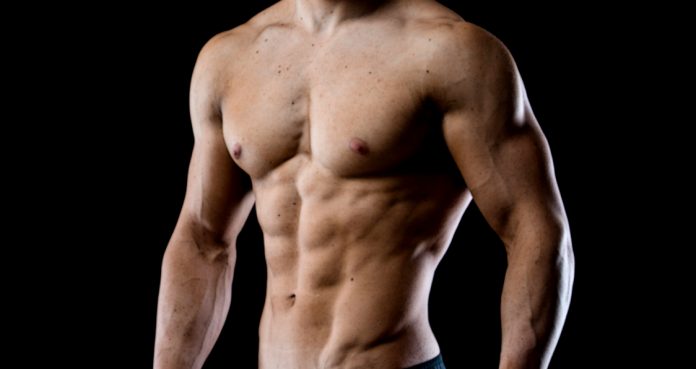
5 Ways To Boost Testosterone Naturally
Improve Your Testosterone Levels Naturally
Have you ever wondered why women don’t get as big as their male counterparts even if they train as hard as them? This is because of a hormone called testosterone. Testosterone is the male hormone and is responsible for puberty, development of sexual organs and building of muscle mass in men.
We have good and bad news for you. Bad news first: if you have been training for a long time but still can’t see any results, low testosterone levels can be the reason for this. Now, the good news: you can improve your testosterone levels naturally and can take your muscle gains to the next level.
Here are some benefits of having high testosterone levels:
Testosterone helps in losing body fat.
It might also helps in fighting depression.
Helps in gaining muscle mass.
Increases your sex drive.
Improves your performance in the gym and outside.
Strengthens your bones.
Better cognitive abilities.
Improves the functioning of your heart.
These benefits should be enough to get you to work on your testosterone levels. Who wouldn’t want to perform better in the bed and gym? If you’re a performance athlete or want to be one, testosterone can be your ‘limitless pill’. You could increase your testosterone levels with steroids, but if you’re in it for longevity and want to be safe, using natural methods is the way to go.
1. Eat Right
If you want to increase your test levels, you will have to stop eating junk food. Your diet and nutrition play a huge role in boosting your testosterone levels. You need to make sure you have your carbs, protein, and fats in the right quantities.
Some people believe eating fats can reduce their T levels and completely remove it from their diets. Doing this can be counterproductive to your goal of increasing your test levels and building muscles.
Cholesterol is another thing you need to have in your diet. Cholesterol is present in every cell of your body and plays an important role in producing hormones, digesting foods and producing vitamin D.
2. High-Intensity Exercise
More isn’t better when it comes to spending time in the gym. Long durations of workouts can lead to a fall in the testosterone levels in your body. You need to make sure your training routines are short and effective.
High-Intensity Interval Training (HIIT) is one of the best ways to boost your test levels in the gym. Other training principles like hypertrophy can also be of great use in increasing the testosterone levels in your body.
Workouts exceeding one hour can cause exhaustion and lead to lower test levels in men. You should keep your workouts shorter than an hour. You can achieve this by reducing the rest time between your sets.
3. Consume Testosterone Boosting Ingredients
Consuming test boosting ingredients can be one of the quickest ways to improve your testosterone levels. If nothing else seems to work out, you can supplement with these ingredients and take your gains to the next level.
Zinc is one the 24 essential minerals needed for the efficient functioning of the human body. One of the most important roles of zinc in men is to produce and maintain adequate test levels.
Vitamin D is another test boosting mineral. You can take it naturally through sunlight or a supplement. A study done by the researchers at the College of Charleston concluded testosterone levels are significantly higher when you supplement with BCAA pre, during, and post exercise.
A great testosterone booster can give you clinically dosed ingredients to boost low T levels. Check out the best testosterone boosters on the market here to give you an edge with training, energy, performance, and endurance.
4. Reduce Stress and Weight
Stress causes cortisol formation in the body which can have a long-term negative impact on your body. Since your cortisol and test levels are inversely proportional, a rise in your cortisol levels can result in a drop in your testosterone levels.
Stress and high cortisol levels can also lead to weight gain, increased appetite and formation of harmful fat around your organs. All these factors then result in lower testosterone levels.
Increased body weight can also be a cause of low T-levels and poor performance in the gym and outside. You need to focus on a balanced diet and lifestyle to improve your test levels and function optimally.
5. Have Fun In Bed
By fun we mean sleep. Sleep deprivation can cause a drop in your test levels. You need to be logging in 6-8 hours of sleep every night. This will ensure higher testosterone levels, and your body will have enough time to recover from your workouts.
A study conducted by the University of Modena, Italy found that for every additional hour of sleep, your testosterone levels rise 15%. If this won’t make you sleep more, we don’t know what else will.
Sex can be your best friend when it comes to increasing your test levels. Many people think their testosterone levels fall after they have sex or masturbate, this is the reason they avoid both of these before a workout. Having sex before a workout increases your testosterone levels and can improve your performance in the gym.
Do you know of any other way to boost your testosterone levels naturally? Let us know in the comments below. Also, be sure to follow Generation Iron on Facebook, Twitter, and Instagram.
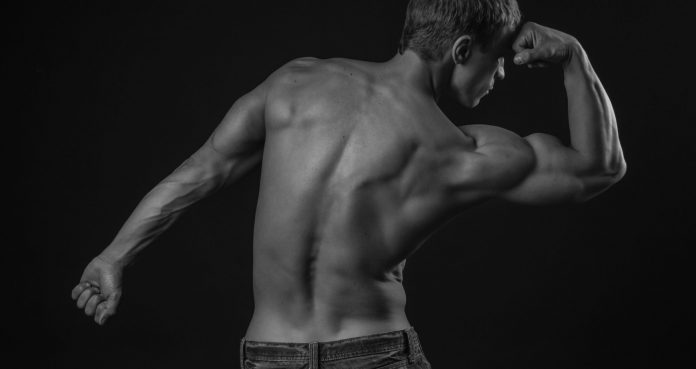
Everything You Need To Know About The Inverted Row
The Ultimate Exercise For Building The Back
There are a number of popular resistance exercises that are used to develop the major muscles of the back such as the lats, rhomboids, and traps.
Regardless of your level of experience, the inverted row is an exercise that can prove to be highly beneficial for building the back.
This article will firstly detail how to perform the inverted row and then discuss a number of the benefits that are associated with the exercise.
Finally, the article will provide a number of inverted row variations and alternatives that can be used to align with your needs, limitations, and goals.
How to Perform the Inverted Row
While the inverted row is relatively straightforward in set-up and execution, it is worthwhile running through the below steps to ensure that you are performing the movement safely and effectively.
Step One: The exercise will be completed using a squat rack or Smith’s machine and the first step is to adjust the bar height.
When under the bar, ensure that it is slightly lower than the pecs to optimize lat development. For trap development, align the bar over the middle of the pecs.
Step Two: Grasp the bar using a grip that is similar to a conventional barbell row. This means using an overhand grip and placing the hands slightly wider than shoulder-width.
Keep the legs extended away from the body and avoid letting the hips drop – the body should be held long.
Step Three: Before initiating the row, pull the shoulders back and down, drive the chest up, and engage the core muscles.
Row the chest towards the bar by squeezing between the shoulder blades and bending at the elbows.
Step Four: Once the chest has risen to the bar, emphasize the squeeze between the shoulder blades before reversing the movement in a controlled fashion.
Inverted Row Benefits
As mentioned, the inverted row can serve as an effective exercise for every lifter, regardless of their level of experience.
With that being said, there are specific benefits that a beginner lifter may experience with the inverted row that differ from the benefits experienced by an advanced lifter.
Beginner Inverted Row Benefits
1) Foundational Strength Exercise
The inverted row has been found to highly activate a number of major muscles found in the back, shoulders, and arms (1).
Therefore, the inverted is a superb exercise and allows the beginner to effectively build strength in the upper body.
2) Highly Adaptable
One of the best things about the inverted row is that it can be easily adapted to increase or reduce the demand on the back.
For example, by bringing the feet further away, the body becomes more parallel to the floor. This, in turn, increases the range of motion of the row thus increasing the demand.
3) Improving Technique and Movement
When it comes to strength training for beginners, the focus should initially be on improving movement efficiency.
A combination of building a base level of strength and enhancing technique can allow the lifter to then progress onto more challenging back-based exercises such as the barbell bent row.
Intermediate / Advanced Inverted Row Benefits
1) Increasing Training Volume
While more challenging exercises will likely be prioritized for the intermediate or advanced lifter, the inverted row can be effectively used to increase training volume.
Research has highlighted that a high training volume is best for enhancing the rate of growth (2) and therefore, using the inverted row as an accessory exercise can prove to be beneficial for back hypertrophy.
2) Less Taxing on Joints
While heavy rowing exercises are beneficial for accelerating the rate of strength development, they can be highly taxing on the shoulder and elbow joints.
Considering that the conventional inverted row uses only bodyweight, it will reduce the amount of stress that these joints experience while still effectively working the back muscles.
3) Improving Muscle Activation
The inverted row provides a great opportunity to develop muscle activation. As highlighted, the inverted row can be easily manipulated to increase the demand or develop specific characteristics.
By focusing on time under tension through the use of eccentric and tempo sets, you can effectively improve back and shoulder muscle activation (3).
Inverted Row Progressions and Alternatives
This section will detail a number of progressions and alternatives that can be used to increase or reduce the demand of the inverted row.
Inverted Row Progressions
1) Tempo Inverted Row
The tempo variation is excellent for improving time under tension and muscle contractility. The method very simply involves manipulating the tempo of each contraction.
A common tempo method is the “3112” which involves a three-second lowering phase, one-second hold at the bottom, one-second lifting phase, and a two-second hold at the top.
2) Feet Elevated / Weighted Inverted Row
For those who are looking to increase the intensity of the inverted row, consider elevating the feet and / or add weight.
For these progressions, simply place the feet on a bench or box and position a weight plate on the chest before performing a set of rows.
Inverted Row Alternatives
1) Knee Bent Inverted Row
As the name suggests, for this variation, instead of keeping the legs entirely straight, bend both knees to 90 degrees.
This seemingly small alteration will change the dynamic of the movement, reduce the range of motion, increase stability and place the body in a more mechanically advantageous position.
2) TRX Inverted Row
The TRX is a highly functional bodyweight trainer. If you do not have access to the squat rack or Smith’s machine, the TRX can step in.
While holding onto both handles, walk the feet forward so that you lean backward and replicate the position of the inverted row. From there, perform a standard set of rows.
3) Chest Supported Row
The chest supported is an excellent alternative that will effectively target the back and shoulder muscles while providing spinal stability.
For this, set a bench of a slight incline and lie directly on top of it. Reach down, grasp the weight and perform a rowing action.
Final Word
The inverted row is a simple yet highly effective bodyweight exercise that can lead to substantial improvements in back strength, size, and contractility. While it is especially useful for the beginner, the inverted row can also be highly valuable for the advanced lifter.
Let us know what you think in the comments below. Also, be sure to follow Generation Iron on Facebook, Twitter, and Instagram.
*Images courtesy of Envato
References
1 – Youdas, James W.; Keith, Julianne M.; Nonn, Danielle E.; Squires, Adam C.; Hollman, John H. (2016-07). “Activation of Spinal Stabilizers and Shoulder Complex Muscles During an Inverted Row Using a Portable Pull-up Device and Body Weight Resistance”. Journal of Strength and Conditioning Research. 30 (7): 1933–1941. doi:10.1519/JSC.0000000000001210. ISSN 1533-4287. PMID 26422610.
2 -SCHOENFELD, BRAD J.; CONTRERAS, BRET; KRIEGER, JAMES; GRGIC, JOZO; DELCASTILLO, KENNETH; BELLIARD, RAMON; ALTO, ANDREW (2019-1). “Resistance Training Volume Enhances Muscle Hypertrophy but Not Strength in Trained Men”. Medicine and Science in Sports and Exercise. 51 (1): 94–103. doi:10.1249/MSS.0000000000001764. ISSN 0195-9131. PMC 6303131. PMID 30153194.
3 – Burd, Nicholas A; Andrews, Richard J; West, Daniel WD; Little, Jonathan P; Cochran, Andrew JR; Hector, Amy J; Cashaback, Joshua GA; Gibala, Martin J; Potvin, James R; Baker, Steven K; Phillips, Stuart M (2012-01-15). “Muscle time under tension during resistance exercise stimulates differential muscle protein sub-fractional synthetic responses in men”. The Journal of Physiology. 590 (Pt 2): 351–362. doi:10.1113/jphysiol.2011.221200. ISSN 0022-3751. PMC 3285070. PMID 22106173.
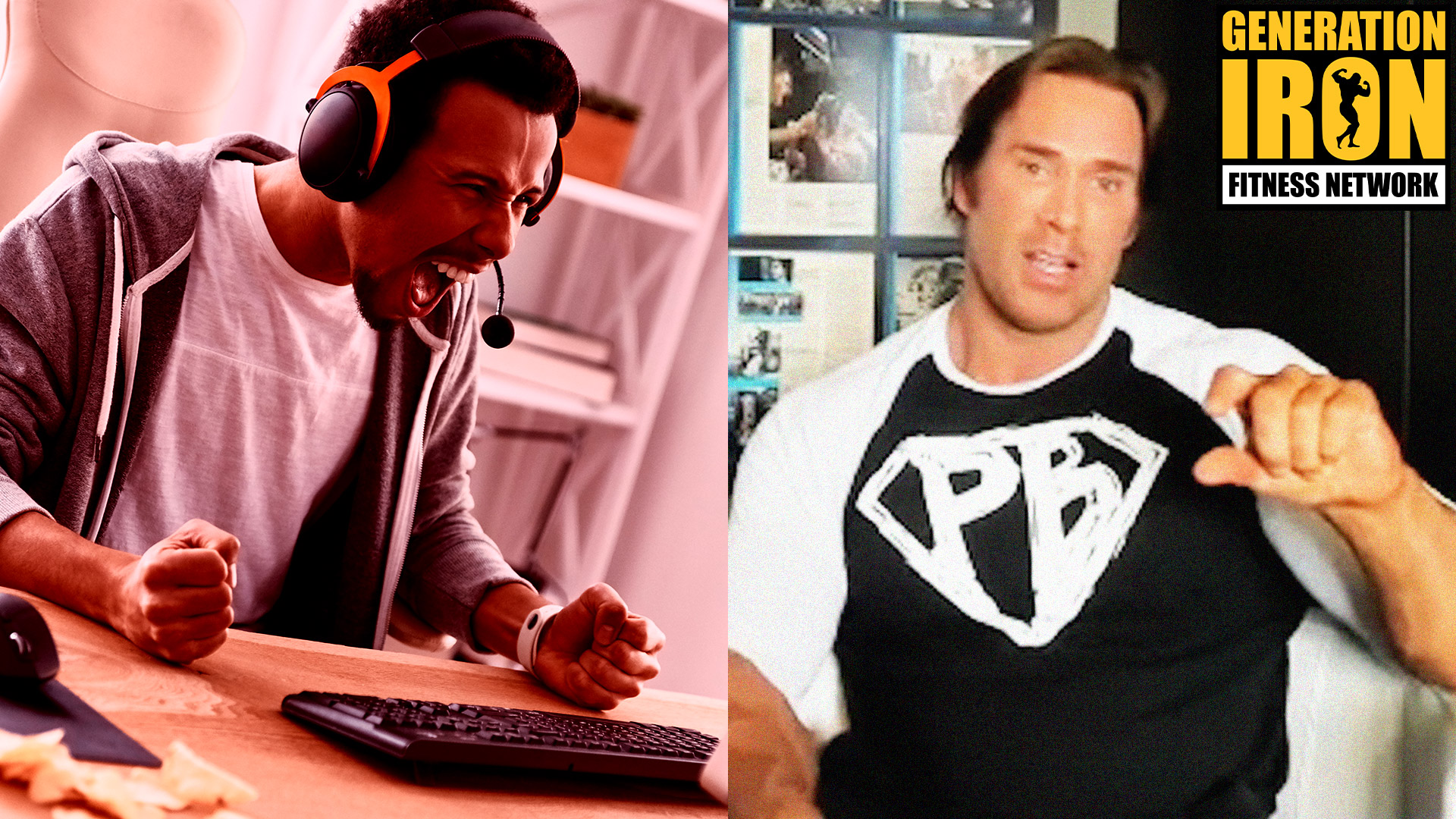
Mike O’Hearn: The Foolproof Way To Stop Haters Online
[embedded content]
Mike O’Hearn details his tactics for not only avoiding hate online but also preventing it from affecting his mental state.
Bullying has always existed in the world. And it’s been a serious problem that can lead to painful mental health problems for victims. This has been exacerbated with the boom of online and social media. Instead of someone in your local community bullying you – it can be anyone from around the world. Not only that, it can be an army of voices. This can have serious consequences on your mental health. Public figures, such as celebrity bodybuilders, are beacons for attention. This also means being a beacon for bullying, hate, and vile comments. In our latest GI Exclusive, Mike O’Hearn shares his fool proof tips for stopping hate and how he avoids letting them get under his skin.
Mike O’Hearn is no stranger to hate online. Between the constant claims that he is lying about being natural and your general run of the mill online trolls – O’Hearn has had his fair share of hurtful comments lobbed at him. But you wouldn’t know that by speaking with him. Much like O’Hearn’s superhuman commitment to his training schedule for over 30 years, he rarely twitches when it comes to hate directed at him. What’s his secret?
During our recent conversation with Mike O’Hearn, we asked him his tactics with dealing with haters online. The information he shared is advice on two fronts – mental tactics for your own health and actionable tactics to prevent more hate in the future.
On the mental front, Mike O’Hearn urges anyone who faces online hate to realize that the people commenting are “below you.” What he means by that is – a bully is someone who feels the need to make petty comments at you. They are not someone you know. They are likely not someone you would respect. The mere fact that you, most likely, would not make such hateful comments online shows that you are in a better place than the hater. O’Hearn stresses that this must be remembered. People who are more powerful than you rarely would take the time to attack you in such a way.
That’s easier said than done of course. A barrage of hateful comments online can pierce even the strongest of minds. So it’s also important to not allow the hateful comments through. It’s sometimes frowned upon for public figures to police their comment sections. Blocking can be seen as a disingenuous gesture to hide the “truth” of their fanbase. Mike O’Hearn couldn’t disagree more.
O’Hearn opens up about how liberally he blocks people on his comment pages. Even for one slight offense – he and his team will block the user permanently. Why? Because it’s not the truth of his fanbase. Odds are they aren’t a fan at all. And why would he subject himself to reading such awful statements day in and day out? Mike O’Hearn believes that all people with any online presence should do the same. The cleaner you can keep your online pages – the happier you will be when interacting with your fans online.
At the end of the day, Mike O’Hearn makes it clear with a direct statement, “Trolls are complete losers.” That might not mean it’s easy to prevent them from getting under your skin. That’s why if you follow O’Hearn’s two tactics, you might create a new mindset in your relationship with not only your fans but yourself. Out of sight, out of mind.
You can watch Mike O’Hearn go into full detail about how he deals with hate and bullying online in our latest GI Exclusive interview segment above!
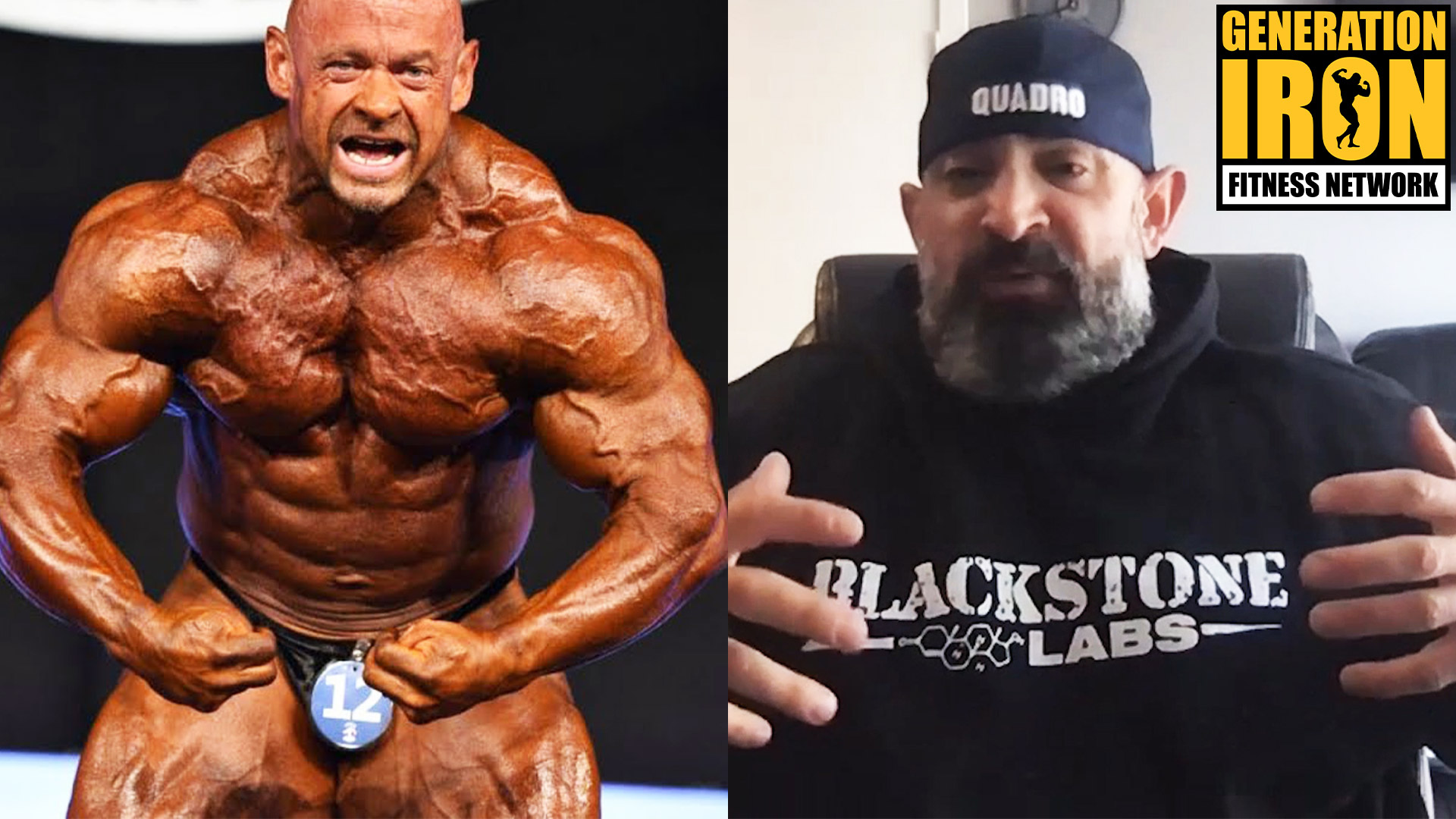
Guy Cisternino: Branch Warren Still Trains Today Harder Than 90% Of Pro Bodybuilders
[embedded content]
Guy Cisternino talks on how Branch Warren inspires him, the power of rivalries, and the new school bodybuilders rising in the ranks.
Guy Cisternino is a bodybuilder who believes in hardcore training. So it may come as no surprise that one of his biggest inspirational bodybuilders is Branch Warren. Branch is known for his insanely hardcore training – which you can witness in depth in the original Generation Iron film. In our latest GI Exclusive interview, Guy Cisternino talks about training with Branch Warren today and how he still pushes harder than most active pro bodybuilders.
Guy Cisternino is a unique brand of pro bodybuilder. He likes to focus on the intensity of the sport – which is probably why he got into some social media hot water after a recent video went viral. That’s why we wanted to know who his biggest inspirations are that got him into bodybuilding. Cisternino named a few legendary athletes such as Kevin Levrone. But at the end of the day, the bodybuilder who still inspires him most to this day is Branch Warren.
Branch Warren no longer competes and has been retired for quite some time. That being said, he still maintains his massive physique and enjoys training in the gym. Not only that, but Branch still goes full hardcore on his sets even in retirement.
Guy Cisternino recounts how he just met up with Branch Warren recently for a training session. What was most refreshing to Cisternino is that Branch still trained like a beast. He has no reason to anymore other than personal enjoyment of the intensity of lifting. It’s a feeling that Cisternino can relate to.
Not only that, but he believes that Branch Warren trains harder than most pros today:
“As far as training and who still inspires me today, believe it or not, is Branch man. Because Branch is retired and he’s like – I was with Branch last week in Dallas and he just – he still trains like a fucking animal. Like I love it. He still trains retired harder than 90 percent of the pros.”
It’s a bold claim – but one that we wouldn’t doubt. Branch Warren often received criticism for training too hardcore. That he would bring himself too big a risk of injury and ruin his career. Perhaps it’s that kind of risk taking that Guy Cisternino misses in the modern crop of bodybuilders.
Speaking of modern bodybuilders, Guy Cisternino also touches on the recent rivalries cropping up in pro bodybuilding. He touches upon Blessing Awodibu and Nick Walker’s pre New York Pro beef. Cisternino also shares his thoughts on the overall new crop of bodybuilders and which ones are showing promise to become champions down the road.
You can watch his full comments on Branch Warren, rivalries, and new school bodybuilders in our latest GI Exclusive interview segment above.
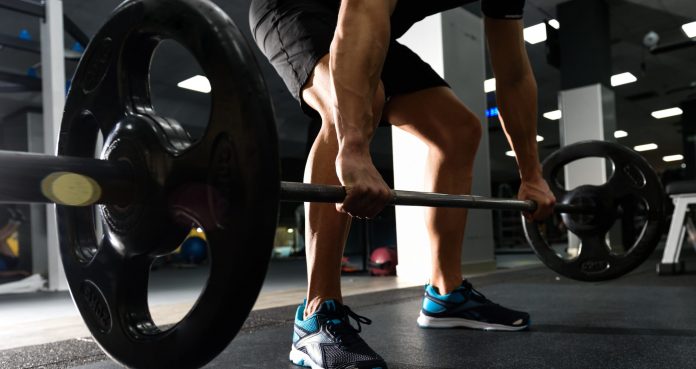
Best Time To Workout During The Day For The Best Results
Finding the right time to workout should be conducive to your schedule, but is there a better time to get your workout done for the best results?
We all know we need to get that valuable workout in for our day to feel complete, but many of us wonder when the best time to do it is. It works as a double edged sword for us, meaning our days are filled with work, relationships, personal time, and a host of errands we need to get done, but yet we know we must slide a workout in there somewhere. On the other hand, if there is a better time to get a workout in, shouldn’t we aim to do it then? Since we all want the best growth possible for ourselves, it can be challenging to make all of this work. While 24 hours in a day seems like a lot, it certainly fills up quicker than most of us would like.
While this topic is widely debated by athletes, fitness and nutrition experts, and everyday gym-goers alike, the answer may simply be as subjective as everyone thinks. For those morning folks, it would make sense to get it done earlier in the day for the best effects. This may help them kickstart their day and get that workout of the way. For those who just can’t seem to pull it together in the morning, then an afternoon or evening workout may better suit you. Regardless of your preference, it is important to squeeze a workout into your day for the crazy positive benefits it can do for you.
Let’s take a look at the benefits of working out in the morning, afternoon, or evening and potentially come up with our own conclusion. For those who have a set schedule and are looking for a change, this may help you greatly. For those with a strict schedule who may refuse to change, it never hurts to see the other side.
Benefits Of A Morning Workout
Working out in the morning can be a great way to start your day. After a long, good night’s sleep of hopefully at least 8 hours, your body is primed and ready to tackle whatever challenge the day may bring. A morning workout can fill your body with endorphins, those feel good hormones, which are produced when your heart rate rises and you’re in good spirits. These will not only help improve your mood, but also aid in raising your energy levels so you can take that workout head on (1).
Giving you a great boost of energy in the morning can wake you up without the need for a 20-ounce coffee that’s just full of jitters and an incoming crash. A morning workout can also kickstart your metabolism into gear so you run more efficiently throughout the day and burn more calories to aid in weight loss and that desired physique.
Benefits Of An Afternoon Workout
For those of us who can squeeze a workout in during a lunch break or find time in the afternoon, this can be a real beneficial hour or two to reset during the day and unwind from work or certain stressors we started our day with. With higher hormone levels in the afternoon and easier muscle functionality, you will be more warmed up from the hours before and time spent moving and fueling your body (2). By taking time to work out during the afternoon, you work to regulate your appetite and improve sleep as it gets closer to the evening and time you typically will wind down. Taking a break mid-day can reduce levels of stress and anxiety and offer your mind a reprieve from the hard work you’ve put in hours before.
This can be the most challenging time to work out because our days are often full to begin with, let alone those meetings or calls that pop up that can really throw us out of whack. Time is valuable as is a workout but sometimes the two just don’t mesh.
Benefits Of An Evening Workout
While working out at night can be challenging, there are certain benefits you may not get from the other times in the day. An evening workout can see muscles grow faster because you won’t be as hindered by cortisol as you are in the morning. You won’t go to sleep hungry and with a great protein supplement, you will feel full and aid in that recovery as you sleep. You also will help your weight loss goals by not snacking late night. With more fuel from the day, you will have more energy and will want to work out longer and an evening workout can serve as a nice way to get all the frustration of the day out of your system (3).
This can be a challenging time to workout especially with so many shows and things to binge. After a hard day the last thing you may want to do is work harder physically, but the benefits are too great to ignore.
Which Is Best?
While there is evidence for all of these times, it is ultimately a preference. For a great energy boost, a morning workout can be great. A mid-day stress reliver may draw you toward an afternoon workout. A nice way to unwind and build muscle may convince you to change to an evening one. In the end, it is dependent on your schedule and what you can fit in your day.
Wrap Up
Finding time to work out can be challenging but we know we need to. With our days full of activities, there may be some days we just don’t have the energy to lace up and get it done. Look into rearranging your schedule and finding those holes where you can best fit a workout in. You know you need it, you know you’ll love the results, and you know how confident you’ll be in making it happen.
Let us know what you think in the comments below. Also, be sure to follow Generation Iron on Facebook, Twitter, and Instagram.
*Images courtesy of Envato
References
Baker Heart and Diabetes Institute (2019). “Morning exercise can improve decision-making across the day in older adults”. (source)
Chtourou, Hamdi; Souissi, Nizar (2012). “The effect of training at a specific time of day: a review”. (source)
Seo, Dae Yun; Lee, SungRyul; Kim, Nari; Ko, Kyung Soo; et al. (2013). “Morning and evening exercise”. (source)

MuscleChemistry 4th of July Sale – 3 DAYS ONLY
July 4th to 7th 30% OFF EVERYTHING + FREE Shipping. Visit Us @ MuscleChemistry, Advanced Supplements Discount Code: MC4JULY Thank You Team MuscleChemistry MuscleChemistry Bodybuilding Community Forums | MuscleChemistry, Advanced Supplements __________________________________________________ REACH TENS OF THOUSANDS OF POTENTIALLY NEW CUSTOMERS, CLIENTS AND MEMBERS. FOR ADVERTISING FEES CONTACT: [email protected] TOLL FREE TEXT 800-430-2989
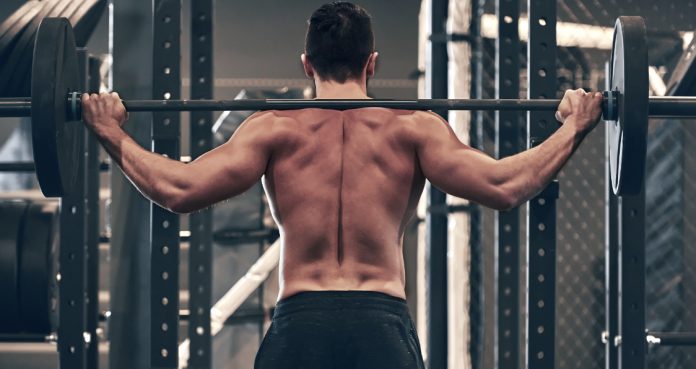
Busting Age-Old Fitness Myths (Long Overdue)
Fitness Myths That Need To Die
Myths have been around ever since Homo sapiens learned to communicate. While some folklore can kindle the human spirit and keep communities together, others can cause trouble. The role of myths in fitness circles is no different. Fitness myths can slow down progress, make you hit a plateau, and can even cause injuries.
Fitness myths have reached a stage where they have gained souvenir status and are passed from one generation to another. The unsuspecting fitness rookies fall for these shiny souvenirs and end up wasting a lot of time and energy following advice that does not work.
1. Rule #1 – No Pain, No Gain
Most people fail to differentiate between pain and pumps. Muscle pumps are great as they are a sign of muscles being flooded with lactic acid and blood. On the other hand, tendon, muscle, and joint pains signal that you’re doing something wrong.
An exercise should not hurt while you are doing it. If you ever feel like you’ll pop something during a workout, it is your body telling you to stop, and you better listen. In this instance, living by the Muhammad Ali quote “I only start counting when it starts hurting” can lead you to some serious damage.
2. Fasted Workouts Help Burn Fat Faster
If we got a dollar every time we heard this claim in the gym, we would be driving the Tesla truck by now. Many people assume working out on an empty stomach burns body fat as the body will utilize the stored fat as a source of energy.
But in reality, fasted training can be counterproductive. Studies have found that working out on an empty stomach can cause the body to break down muscle to burn glycogen as fuel.
Apart from this, working out on an empty stomach can negatively impact your performance. If you don’t have enough macros in your body, you’ll run out of gas before you can do anything meaningful during an intense workout.
3. If You Are Not Sore, You Are Not Training Hard Enough
Many people measure the effectiveness of their workouts by the degree of muscle soreness they experience over the next couple of days after a workout. These people try to train to failure in every workout and won’t leave the gym until they have a muscle-ripping pump.
You break down muscle tissues when you lift weights. Inflicting soreness-inducing damage on your muscles every time you train isn’t a good idea.
It is time you stop assessing your workout intensity through the severeness of your DOMS. Some people even use sweat as a yardstick. They will not consider a workout complete until they are drenched in sweat. Following a customized training plan is a better way of ensuring workout effectiveness. Put in the work and be patient. You can’t rush to your dream physique. Good things take time, and this is one of them.
4. Stretching Prevents Injury
Ask anyone trying to touch their toes before a workout why they are doing what they are doing, and they’ll probably tell you that stretching before a workout reduces the chances of an injury.
If research is to be believed, static stretching before a training session can cause an injury. A study at the University of Nevada found that static stretching can weaken your muscles by as much as 30 percent because they act like typical resistance exercises where you put your muscles under constant tension for the duration of a set.
You should, instead, focus on warm-ups that increase both body heat and blood flow to the muscles. Dynamic stretching is a better option for getting your body ready for your workouts. Dynamic warm-ups include aerobic activities that mimic the movements you would do in an exercise.
5. Resistance Training Can Make Women Look Masculine
Women getting masculine through weight training is one of the oldest myths that refuses to die. The origin of this myth is ambivalent, but there are two possible sources:
Insecure men who couldn’t see women getting stronger than them.
Petite and delicate are a couple of adjectives that are associated with an ideal woman. Women who lift weights contradict this image.
The truth is that the male hormone called testosterone is responsible for muscle gain in men. Women don’t produce testosterone in enough quantities as their male counterparts to get as big as them. On the other hand, lifting weights can help women tone their muscles. Something doing cardio alone can never do.
6. Isolation Exercises Are Safe
Compound (multi-joint) exercises have earned a bad name for being too risky. Newbies, the elderly, and people recovering from injuries are often asked to use machines. They are told that isolation (single-joint) exercises can’t cause injuries.
Most people assume that an exercise machine automatically puts their body in the correct position and helps them do the movement correctly with the right form. This assumption is only true if the machine is adjusted for your height and weight.
Since isolation exercises put all the tension on a single muscle, a small mistake while using heavier weights can cause an injury. In the case of compound exercises, supporting muscles step in and share the load when the going gets tough.
7. Crunches Can Help Burn Fat
Late-night infomercials have made people believe that they can spot-reduce their belly fat by using a particular ab machine or a sauna belt. The belief that you can reduce tummy fat by doing a few crunches comes from the same school of thought.
While performing crunches might help strengthen the muscles around your midsection and improve your posture, they don’t do much in reducing your overall body fat percentage.
Let’s talk numbers for a second. You need to burn 3,500 calories to lose one pound of fat, and doing 50 odd crunches won’t come close to burning that much fat.
If spot reduction worked, we would be the first to tell you about it.
8. Lifting Weight Can Turn Fat Into Muscles
If you have been around the fitness scene long enough, chances are you know someone who is overweight but lifts more than most buff dudes in your gym and gulps down protein shakes by the gallons in hopes of turning his fat into muscles.
Muscles and fat are two different types of tissues in your body. One type of tissue cannot turn into another. Exercise solely can only improve your muscle tone. You need a personalized diet, training, and recovery program to undergo a successful transformation.
Did you believe any of these fitness myths? Let us know in the comments below. Also, be sure to follow Generation Iron on Facebook and Twitter.
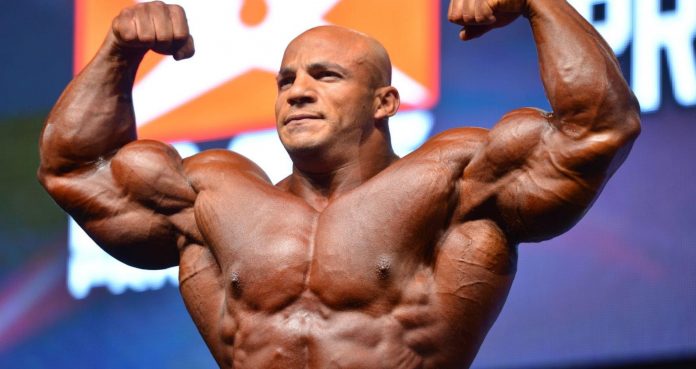
Q&A: How Much Protein Does Big Ramy Eat?
Building muscle requires protein. However, eating enough protein each day can be difficult, and expensive.
Today we’re sitting down with Mr. Olympia 2020, Big Ramy, to find out how much protein he eats, his favorite protein sources, and what his grocery shopping list looks like.
Generation Iron: Hi Ramy. Thanks for taking the time to talk with us today.
Big Ramy: My pleasure. Your website is a great source of information and I’m happy to contribute.
Generation Iron: Let’s get right into it then! How much protein do you eat and how much protein do you recommend for athletes trying to build muscle?
Big Ramy: I eat around 500g of protein every day. On my rest days it may go down to 400g, and on a really hard training day, I might consume as high as 600g, but I always make sure I consume at least 1g of protein per pound of body weight. I recommend that athletes who are trying to build muscle consume at least 1g of protein per pound of body weight. I have gone as high as 2g of protein per pound of body weight during my offseason.
Generation Iron: That’s a lot of protein! What are your favorite sources of protein?
Big Ramy: It’s important to find protein sources that digest well and don’t leave you feeling bloated. My favorite protein sources are eggs/egg whites, skinless chicken breast, extra lean ground beef, salmon, and bison. I also use the Enhanced Labs Isolate Protein after my workouts. It tastes amazing and it makes it really convenient to get protein into my body right after a hard workout.
Generation Iron: I noticed you didn’t include pork. Is there a reason why?
Big Ramy: I don’t eat pork for religious reasons, but I also feel that there are better options than pork. Pork is generally very fatty and a low-quality meat.
Generation Iron: That makes sense. I imagine your grocery shopping bill must be through the roof!
Big Ramy: Eating like a bodybuilder is expensive but it’s not as bad as you’re probably thinking. The rest of my diet is fairly inexpensive. My favorite carb sources are potatoes, rice and oatmeal. My favorite fat sources are avocado, olive oil and coconut oil. Using a protein powder like the Enhanced Labs isolate protein for 1-2 meals per day also really helps keep your grocery bill under control.
Generation Iron: That’s good advice! Do you have any closing remarks for our fans before we sign off?
Big Ramy: Remember that your body needs protein to build muscle. I don’t always feel like eating protein, but I always make sure I eat at least 1g of protein per gram of body weight. If I’m not hungry for a meal, I’ll make a shake by blending together Enhanced Isolate protein, frozen fruit, oatmeal and coconut oil.
Generation Iron: You heard it from Mr. Olympia himself. You have to eat big to get big!
Wrap Up
Getting enough protein is vital for your training and performance gains. You’ve heard it first from Big Ramy himself; eat protein to get huge! Don’t neglect it and watch those gains flow.
Let us know what you think in the comments below. Also, be sure to follow Generation Iron on Facebook, Twitter, and Instagram.
*Images courtesy of Enhanced and Big Ramy Instagram
